Residential Services
CALL US NOW AND TALK TO A LICENCED TECHNICIAN
(647)-965-2048
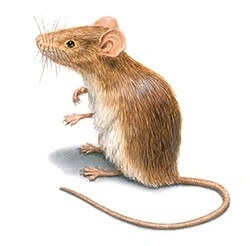
RODENTS
Rodents tend to enter homes during months when the temperature drops below . A spike in Mouse and Rat activity usually occurs between November and March. They pose a threat to your home as they may contain diseases as well as carry fleas and ticks. It is also common for them to chew through pipes and electrical wires, costing you a fortune!
Mice and rats are both small rodents that belong to the order Rodentia. They share many similarities but also have distinct differences. Here’s some information about mice and rats:
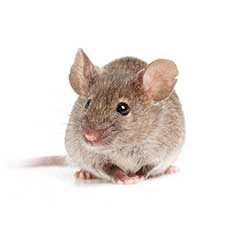
MICE
- Mice are small rodents with a slender body and a pointed snout.
- They typically have a body length of 2 to 4 inches and a tail length of 2 to 4 inches
- Mice have relatively large ears and small eyes.
- They come in various colors, including white, brown, gray, and black, depending on the species.
- Mice are known for their ability to reproduce quickly, and a female mouse can have multiple litters per year.
- They are generally more curious and agile than rats.
- Mice are omnivorous, consuming a wide range of food including seeds, grains, fruits, insects, and small invertebrates.
- House mice are the most common species of mice and are often considered pests when they invade human dwellings.
- They are known to invade homes for food and shelter, and can squeeze in through holes the size of a dime
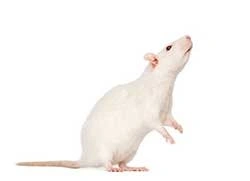
RATS
- Rats are larger rodents with a stout body and a blunt snout.
- They typically have a body length of 7 to 10 inches (18 to 25 cm) and a tail length of 6 to 8 inches (15 to 20 cm).
- An adult rat can squeeze into your home through a hole as small as the size of a quarter.
- Rats have relatively smaller ears and larger eyes compared to mice.
- They come in various colors, including brown, gray, and black, depending on the species.
- Rats also have a relatively rapid reproduction rate, like mice.
- Rats are generally more cautious and cautious than mice, and they tend to avoid new objects or changes in their environment.
- They are omnivorous, with a diet that includes grains, fruits, vegetables, meat, and other available food sources.
- The Norway rat and the roof rat are common species of rats found worldwide.
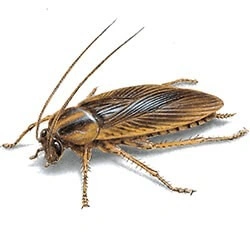
COCKROACHES
Cockroaches are a major pest and can multiply very easily to cause extreme infestations in your kitchen, bathrooms. and throughout the rest of your home. They can carry diseases and contaminate surfaces and food products. They have resilient tendencies and there is a reason they have been around for millions of years. You can bring them to your home from food products, beer cases, boxes and packages, or Guests! If you live in a Townhouse, or building, Cockroaches can easily move unit to unit on plumbing stacks or electrical wires.
We use 4 different application methods to eliminate your cockroach infestation and it is possible to see 99% of the roach activity dead after 1st hour of the treatment.
While there are thousands of cockroach species, the most common types that interact with humans include the German cockroach, American cockroach, and Oriental cockroach.
Here are some key facts about cockroaches:
Adaptability: Cockroaches are highly adaptable creatures and can survive in a wide range of environments. They can be found in homes, restaurants, sewers, and even outdoors. They are able to withstand extreme temperatures and can live without food for long periods.
Diet: Cockroaches are omnivorous scavengers and can eat almost anything, including decaying organic matter, garbage, food scraps, and even certain fabrics and book bindings. This versatility in their diet contributes to their survival.
Health Concerns: Cockroaches are often considered pests due to their association with unclean environments. They can contaminate food and surfaces with bacteria, pathogens, and allergens, posing potential health risks. Cockroach infestations can trigger allergies and asthma in some individuals.
Reproduction: Cockroaches reproduce quickly, with females capable of producing several batches of eggs during their lifespan. Depending on the species, a female cockroach can lay up to 30-50 eggs at a time.
Lifespan: The lifespan of a cockroach varies depending on the species and environmental conditions. Generally, they live for a few months to a year or more. Some species have relatively shorter lifespans, while others can live for several years.
Controlling cockroach infestations typically involves maintaining cleanliness, eliminating food and water sources, sealing entry points, and hiring Speedy pest control for professional services to eliminate them. It’s important to address cockroach problems promptly to minimize health risks and prevent further infestations.
Contact us at Speedy Pest Control for Cockroach Extermination!
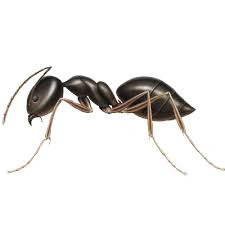
ANTS
Southern Ontario is home to several species of ants. Here are some common ant species found in the region:
- Carpenter Ants: These ants are relatively large, usually black or reddish-black in color, and build their nests in wood. They are known for excavating galleries in decaying trees or wooden structures but can also damage homes if they infest the wood.
- Pavement Ants: Pavement ants are small ants with dark brown or black bodies. They typically nest under sidewalks, driveways, and building foundations. They are commonly found in urban areas and create small mounds of soil around their nest entrances.
- Black Ants: Black ants, also known as common black ants or garden ants, are small insects that belong to the family Formicidae. They are found in various parts of the world and are known for their black or dark brown coloration.
- Pharaoh Ants: Pharaoh ants are small, pale yellow ants that are commonly found in buildings. They prefer warm and humid environments and are known for establishing large colonies with multiple queens. Pharaoh ants can be a significant nuisance in hospitals, restaurants, and homes.
- Odorous House Ants: Odorous house ants are small and dark brown to black in color. They emit a foul smell when crushed, often described as a rotten coconut or blue cheese odor. They build their nests indoors, especially in wall voids, and can also be found outdoors in gardens or under rocks.
- Thief Ants: Thief ants are tiny ants, usually pale yellow to light brown in color. They are known for their habit of nesting close to other ant colonies and stealing their food. They can infest homes and are commonly found near sources of moisture.
- Acrobat Ants: Acrobat ants are small to medium-sized ants that can range in color from light brown to black. They are named for their unique habit of raising their abdomen over their head when disturbed. They usually nest in trees but can also be found indoors in search of food.
These are just a few examples of ant species found in Southern Ontario. There are many more species, including various native ants, and the presence of different species can vary depending on the specific location and habitat.

CARPENTER ANTS
Carpenter ants are a type of ant species known for their ability to excavate wood to create their nests. While they don’t eat wood like termites do, they can cause significant structural damage to buildings and wooden structures. Here’s some more information about carpenter ants:
- Appearance: Carpenter ants are usually large ants, ranging in size from 1/4 inch to 1/2 inch in length. They come in various colors, including black, red, brown, or a combination thereof. They have a segmented body with a narrow waist and elbowed antennae.
- Habitat: Carpenter ants typically nest in moist or decaying wood, such as tree stumps, dead trees, or wooden structures. They prefer damp areas because the moisture makes it easier for them to excavate the wood.
- Behavior: Carpenter ants are primarily active at night, and during the day, you may see them foraging for food. They feed on a variety of food sources, including other insects, sweets, and plant juices. They can travel relatively long distances in search of food, leaving behind pheromone trails for other ants to follow.
- Damage: While carpenter ants do not consume wood, they tunnel through it to build their nests. Over time, this can weaken the wooden structures, causing damage. Signs of a carpenter ant infestation include the presence of wood shavings (frass) near nesting sites, rustling or tapping sounds coming from the walls, and the sighting of large ants, especially near food sources or moist areas.
- Control and Prevention: To prevent or control a carpenter ant infestation, it’s important to eliminate moisture problems and address any wood decay issues in and around your property. Repairing leaks, improving ventilation, and removing decaying wood can help deter carpenter ants. If you suspect an infestation, it’s best to contact a professional pest control service to assess the situation and develop an appropriate treatment plan.
Remember, while it’s possible to manage small infestations on your own, dealing with a significant carpenter ant problem often requires the expertise of professionals to ensure effective eradication and long-term prevention.

PAVEMENT ANTS
Pavement ants are a common species of ants found in many parts of North America. They get their name from their tendency to build nests and forage for food along pavements, sidewalks, and driveways. These small ants are typically dark brown or black in color and measure about 1/8 inch (3-4 mm) in length.
Here are some key characteristics and behaviors of pavement ants:
- Nesting: Pavement ants create their nests in the soil beneath sidewalks, driveways, and stones, or in cracks and crevices in pavement. Their colonies can be quite large, containing thousands of individuals.
- Foraging: These ants are opportunistic foragers and will scavenge for a variety of food sources. They are attracted to sweet substances, greasy foods, crumbs, and dead insects. They can also feed on live insects and plant matter.
- Trails: Pavement ants establish well-defined foraging trails, often marked by pheromones, which they use to navigate between their nests and food sources.
- Colony structure: Pavement ant colonies consist of workers, which are sterile females responsible for foraging, nest maintenance, and caring for the brood. The colonies also have a queen, who is responsible for laying eggs and maintaining the population.
- Indoor presence: Pavement ants can also establish nests indoors, particularly in areas with moisture or food sources. They may infest basements, crawl spaces, and walls, especially if there are cracks or gaps for them to access.
- Control: If pavement ants become a nuisance, there are several methods to control their population. These include eliminating food sources, sealing entry points, and using ant baits or insecticides. It’s often best to consult a technician from Speedy Pest Control to assess the situation and determine the most appropriate course of action.
Remember that proper identification is essential for effective ant control, as different ant species may require different treatment methods.
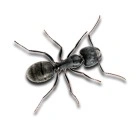
BLACK ANTS
Black ants, also known as common black ants or garden ants, are small insects that belong to the family Formicidae. They are found in various parts of the world and are known for their black or dark brown coloration. Here are some key points about black ants:
- Species: There are many species of black ants, but one common species is the European black ant which is native to Europe but has been introduced to other parts of the world including North America.
- Appearance: Black ants are typically small in size, measuring about 2 to 5 millimeters in length. They have a slender body with a narrow waist, elbowed antennae, and six legs. The workers are usually black or dark brown, while the queens and males may have additional colors or wings.
- Habitat: Black ants are adaptable and can be found in a variety of habitats, including gardens, lawns, forests, and urban areas. They construct intricate nests in soil, under rocks, or in decaying wood. Their colonies can vary in size from a few dozen to thousands of individuals.
- Diet: Black ants are omnivorous and have a diverse diet. They primarily feed on insects, other arthropods, nectar, and sweet substances such as honeydew produced by aphids or scale insects. They may also scavenge for food scraps or forage on plants for seeds and fruits.
- Social Structure: Like other ants, black ants have a highly organized social structure. Their colonies consist of queens, males, and workers. The queens are responsible for reproduction, while the workers perform various tasks such as foraging, nest building, and caring for the brood.
- Communication: Black ants communicate using chemical signals called pheromones. These pheromones help them trail food sources, mark their territories, and coordinate their activities within the colony. They also use touch and antennation to communicate with each other.
- Benefits and Pests: Black ants play important roles in ecosystems. They help in seed dispersal, control populations of other insects, and improve soil quality. However, they can also become pests when they invade homes, infest food sources, or cause damage to structures.
- Control: If black ants become a nuisance, there are various methods to control their populations. This can include maintaining cleanliness to reduce food sources, sealing entry points into buildings, and using bait stations or insecticides

PHARAOH ANTS
- Appearance: Pharaoh ants are tiny, measuring about 1.5 to 2 millimeters in length. They are light yellow to reddish-brown in color and have a darker abdomen.
- Habitats: Pharaoh ants prefer warm and humid environments. They commonly nest in walls, ceilings, and other secluded areas within structures. They can also be found outdoors in warm climates.
- Colony structure: Pharaoh ants are unique in their colony structure. They have multiple queens in a single colony, which is uncommon among ants. This feature allows the colony to grow rapidly and makes them difficult to control.
- Reproduction: Pharaoh ant colonies reproduce by a process called budding. This means that when the colony becomes overcrowded, a group of ants, including queens, workers, and brood, will break away from the main colony and form a new satellite colony elsewhere.
- Food preferences: These ants are omnivorous and feed on a wide variety of food sources. They are known to consume sweets, proteins, fats, and even dead insects. Pharaoh ants are particularly attracted to sugary substances.
- Nuisance and health risks: Pharaoh ants are considered pests due to their presence in human dwellings. They can contaminate food and surfaces as they forage for resources. Additionally, these ants are known to transmit pathogens, posing a potential health risk.
- BControl measures: Eradicating pharaoh ant infestations can be challenging due to their complex colony structure and their ability to establish multiple satellite colonies. Effective control usually requires a combination of sanitation, baiting, and professional pest management methods.
It’s worth noting that pharaoh ants should be handled by pest control professionals who have experience dealing with these pests. DIY methods may not be sufficient for complete eradication and can potentially make the infestation worse by causing the ants to scatter and establish new colonies.
Contact us at Speedy Pest Control to help exterminate all of your Ant Problems!
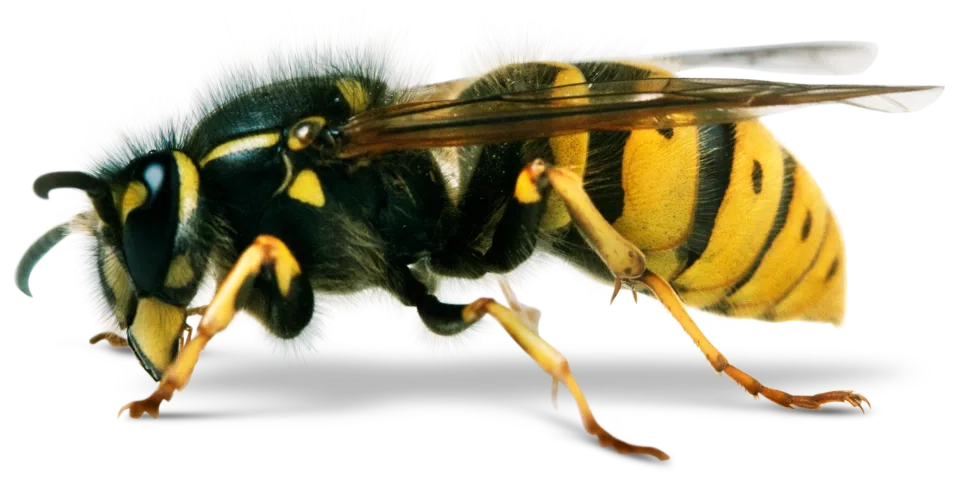
WASPS AND BEES
Wasps can indeed be considered pests when they build nests in or near human-occupied areas and pose a threat to people’s safety. If you’re dealing with a wasp infestation or nest that needs to be removed, it is advisable to seek professional pest control services to handle the situation safely and effectively. Here are a few steps typically involved in wasp pest control:
- Identification: Professional pest control technicians can identify the specific species of wasps present and assess the extent of the infestation.
- Inspection: They will inspect the affected area, locate the wasp nests, and determine the most appropriate method for removal.
- Protective Measures: The technicians will take necessary precautions to ensure their safety and minimize the risk of wasp stings. This may involve wearing protective clothing and using specialized equipment.
- Removal: Depending on the situation, the pest control experts may use various methods to remove the wasp nests. These methods can include physical removal, using insecticides, or employing specialized techniques like trapping or vacuuming.
- Prevention: To prevent future infestations, the pest control professionals may offer advice on eliminating attractants and sealing off entry points to discourage wasps from returning.
It is crucial to emphasize that dealing with wasps can be hazardous, especially for individuals with allergies or those who are inexperienced in handling such situations. Therefore, it is strongly recommended to rely on professional pest control services for the safe and efficient removal of wasp nests.
Contact us @ Speedy Pest Control to assist in getting rid of your wasp and bees!
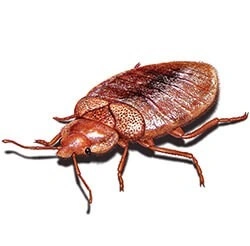
BED BUGS
Bed bugs are small, parasitic insects that feed on the blood of humans while they sleep. They are called bed bugs because they are often found in beds and bedding, but they can also infest other areas, such as upholstered furniture, clothing, and cracks and crevices in walls.
Here are some key points about bed bugs:
- Appearance: Adult bed bugs are about the size of an apple seed, with flat, oval-shaped bodies. They are usually reddish-brown in color, although their appearance can change depending on when they last fed.
- Bites and Symptoms: Bed bug bites can cause itchy, red welts on the skin, often arranged in a line or cluster. However, some people may not have any noticeable reaction to the bites, while others may have more severe allergic reactions.
- Infestation Signs: Besides bites, other signs of a bed bug infestation include small blood stains on sheets or pillowcases, dark fecal spots on bedding or nearby furniture, and a sweet, musty odor in the infested area.
- Infestation Sources: Bed bugs can be brought into a home or establishment through infested furniture, luggage, or clothing. They can also travel between adjoining apartments or rooms.
- Prevention: To prevent bed bug infestations, it’s essential to inspect second-hand furniture or clothing before bringing them into your home. When traveling, inspect hotel rooms for signs of bed bugs, and keep your luggage elevated and away from the bed.
- Treatment: If you suspect a bed bug infestation, it’s crucial to act promptly. Treatment often involves a combination of non-chemical methods, such as thorough cleaning, vacuuming, and laundering of infested items, as well as chemical/ heat treatments applied by licensed professionals such as Speedy Pest Control
It’s important to note that dealing with a bed bug infestation can be challenging, and professional assistance is often necessary to effectively eliminate them. If you suspect an infestation in your home, it’s recommended to contact us to assess the situation and guide you through the appropriate treatment process.
Contact us @ Speedy Pest Control to exterminate your Bed bug infestation!
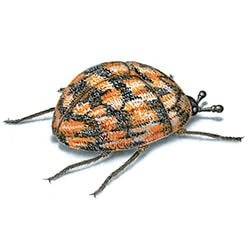
BEETLES
Beetles are members of the order Coleoptera and are the most diverse group of insects on the planet. With over 300,000 species known and documented, most academics agree many more species remain undiscovered throughout the various ecosystems of the world. In Canada alone, scientists estimate more than 9,000 species of beetles either occur naturally or as invasive species introduced through various means. Beetles are identified by their hard outer wings known as elytra and a carapace. They all have chewing mouthparts with powerful jaws. Beetles are diverse in size and colouration ranging from bright colours to brown or black. They feed on variety of foods ranging from plant to animal materials.

BOXELDER BUG
Boxelder bugs are small insects that belong to the family Rhopalidae. They are commonly found in Southern Ontario, particularly over the last few years. Here’s some information about boxelder bugs:
- Appearance: Adult boxelder bugs are about half an inch long and have a distinct appearance. They have a black body with three red lines on the thorax and red veins on their wings. Their wings overlap, forming an ‘X’ shape when at rest. Nymphs (young boxelder bugs) are smaller and bright red in color.
- Habitat: Boxelder bugs are named after their primary host, the boxelder tree, but they can also be found on other maple tree species and occasionally on ash and cherry trees. They feed on the leaves, flowers, and seeds of these trees. During the warmer months, they can be seen outdoors on tree trunks, branches, and foliage.
- Behavior: In the fall, boxelder bugs often congregate in large numbers on the sunny sides of buildings, seeking shelter for the winter. They enter homes and other structures through small cracks, gaps, and openings. While they do not cause structural damage or reproduce indoors, their presence can be a nuisance. Boxelder bugs do not bite humans or pets, nor do they transmit diseases.
- Overwintering: Boxelder bugs enter a state of diapause (reduced activity) during the winter months. They hibernate in protected areas like wall voids, attics, and crawl spaces. When the weather warms up in spring, they become active again and may attempt to move outdoors.
- Control and prevention: If boxelder bugs become an issue indoors, there are several steps you can take to prevent or manage them:
- Seal cracks and gaps in windows, doors, and foundation walls to prevent their entry.
- Repair or replace damaged screens on doors and windows.
- Use weather stripping to seal gaps around windows and doors.
- Vacuum up boxelder bugs indoors and dispose of the vacuum bag promptly.
- Vacuum up boxelder bugs indoors and dispose of the vacuum bag promptly.
Contact us @ Speedy Pest Control to exterminate your Box elder Bugs!
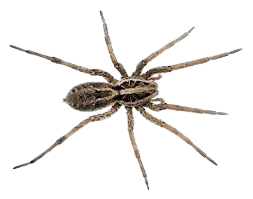
SPIDERS
Southern Ontario is home to a variety of spider species. While there are numerous types of spiders in the region, here are a few common ones you may encounter:
- Grass Spider: Grass spiders are commonly found in Southern Ontario. They are brown or tan in color with dark markings on their bodies. These spiders build funnel-shaped webs in grassy areas or low vegetation and are known for their agility and speed.
- Cellar Spider: Also known as daddy longlegs spiders, cellar spiders are pale yellow or grayish in color. They have long, thin legs and a small body. Cellar spiders are frequently found in homes, garages, and basements, where they spin irregular webs.
- Cross Orbweaver: Cross orbweavers are large, colorful spiders with a distinct cross-shaped pattern on their abdomens. They are commonly seen in gardens, meadows, and wooded areas. These spiders construct large, circular webs to catch flying insects.
- Wolf Spider: Wolf spiders are common in Southern Ontario and can be quite large. They have brown or grayish-brown coloration with various markings. Rather than building webs, wolf spiders are active hunters and rely on their excellent eyesight and speed to catch their prey.
- Black Widow: Southern Ontario is known to have black widow spiders, including the Northern black widow These spiders have a shiny black body with a red hourglass-shaped mark on the underside of the abdomen. They are venomous but generally not aggressive unless threatened.
These are just a few examples of spiders found in Southern Ontario. It’s important to note that while some spiders can deliver venomous bites, most are harmless and play a beneficial role in controlling other insect populations. If you have concerns about spiders in your area, or infestation in your home
Contact us @ Speedy Pest Control to exterminate your spiders!
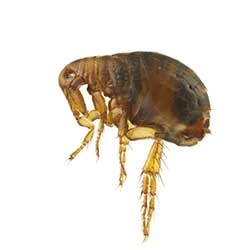
FLEAS
Fleas are small, wingless insects that are parasitic in nature. They belong to the order Siphonaptera and are known for their ability to jump long distances relative to their body size. Fleas feed on the blood of mammals and birds, including humans, and can cause various health issues.
Here are some key points about fleas:
- Identification: Adult fleas are usually dark brown or reddish-brown in color, and they have flattened bodies that enable them to move through the fur or feathers of their hosts. They have long hind legs designed for jumping.
- Life cycle: Fleas undergo complete metamorphosis, which includes four stages: egg, larva, pupa, and adult. Female fleas lay their eggs on the host or in the surrounding environment. The eggs then fall off the host and develop into larvae, which feed on organic matter, including flea feces. After several molting stages, the larvae spin cocoons and enter the pupal stage. Adult fleas emerge from the pupae when they sense vibrations, warmth, or carbon dioxide, indicating the presence of a potential host.
- Hosts and habitat: Fleas can infest a wide range of animals, including cats, dogs, rodents, birds, and even humans. They are commonly found in households with pets, particularly those that spend time outdoors. Fleas prefer warm and humid environments, and they tend to thrive in places like carpets, bedding, furniture, and outdoor areas where animals rest or nest.
- Health risks: Fleas are not just a nuisance; they can pose health risks to both humans and animals. Their bites can cause itching, irritation, and allergic reactions in some individuals. Fleas are also known to transmit diseases such as bubonic plague, typhus, and certain species of tapeworms. Additionally, excessive scratching from flea bites can lead to secondary skin infections.
- Prevention and control: To prevent and control flea infestations, it is important to regularly treat pets with appropriate flea control products recommended by veterinarians. Vacuuming carpets, furniture, and pet bedding regularly can help remove flea eggs, larvae, and pupae. Washing pet bedding in hot water can also kill fleas and their eggs. In severe infestations, professional pest control services may be necessary to eliminate fleas from the home.
If you suspect a flea infestation in your home or on your pets, it is advisable to consult with a veterinarian or a pest control professional for guidance on effective treatment options.
Contact us @ Speedy Pest Control to help exterminate your fleas!
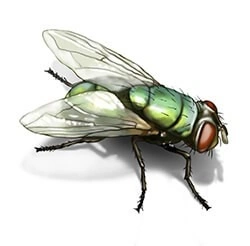
FLIES
Flies can be a common pest problem in many areas, especially during warmer months. They can be a nuisance and carry diseases, so it’s important to address fly infestations and implement pest control measures. Here are some methods for controlling flies:
- Sanitation: Keeping your surroundings clean is crucial in fly control. Remove any potential breeding grounds by regularly disposing of garbage, cleaning up food spills, and ensuring proper drainage.
- Exclusion: Prevent flies from entering your home or building by installing screens on doors and windows. Check for gaps or openings that flies can use as entry points and seal them off.
- Traps: Various fly traps are available, such as sticky traps or light traps. These devices attract and capture flies, reducing their population. Place them in strategic locations, preferably away from living areas.
- Insecticides: Certain insecticides can effectively control flies. Choose products specifically designed for fly control and use them according to the instructions. Common applications include sprays, aerosols, or baits.
- Biological control: Some natural predators, such as certain species of wasps or parasitic nematodes, can help control fly populations. Consider introducing these predators to the affected area.
- Professional pest control: If you’re dealing with a severe fly infestation or if your efforts aren’t effective, it may be wise to seek assistance from a professional pest control service. They have the knowledge and tools to handle difficult fly problems effectively.
Remember that prevention is key in fly control. By maintaining cleanliness, eliminating food sources, and implementing preventive measures, you can minimize the chances of a fly infestation.
Contact us @ Speedy Pest Control for fly treatments!
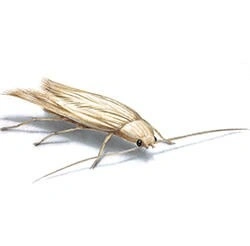
MOTHS
Moth pest control typically involves taking measures to eliminate and prevent moth infestations in homes or other affected areas. Moths can cause damage to fabrics, textiles, stored food, and other organic materials. Here are some steps you can take to control moth infestations:
- Identify the type of moth: Different types of moths may require different control methods. Common types include clothes moths and pantry moths. Identifying the specific type will help you implement the most effective control measures.
- Clean and vacuum: Thoroughly clean the affected area, including closets, drawers, and pantry shelves. Vacuuming helps remove moth eggs, larvae, and adult moths. Pay close attention to cracks, crevices, and corners where moths can hide.
- Discard infested items: Dispose of infested items that cannot be salvaged, such as heavily damaged clothing or infested food products. Seal them in plastic bags before throwing them away to prevent spreading the infestation.
- Launder or dry clean clothing: Wash or dry clean all clothing, linens, and fabrics that may be infested. Moths are attracted to soiled fabrics, so cleaning them can eliminate any eggs or larvae.
- Freeze or heat treatment: For delicate or valuable items that cannot be washed, you can freeze them for several days or heat them in an oven to kill any moth eggs or larvae. Freezing at temperatures below -18°C (-0.4°F) for at least 72 hours is effective in killing moth pests.
- Centipedes are generally nocturnal and prefer moist environments. They can be found in various habitats, including soil, leaf litter, and beneath rocks and logs.
- Use moth repellents: There are several options for moth repellents, including mothballs, cedar blocks, lavender sachets, and essential oils. Place these repellents in closets, drawers, and storage areas to deter moths from laying eggs and infesting your belongings.
- Monitor and trap: Set up pheromone traps designed specifically for moths. These traps use synthetic moth pheromones to attract and catch male moths, disrupting their reproductive cycle and reducing the population.
- Seal entry points: Inspect your home for any potential entry points where moths can get in, such as cracks in walls or windows. Seal these openings to prevent future infestations.
- Proper food storage: In the case of pantry moths, store food items in airtight containers to prevent moth access and infestation. Regularly inspect and discard any infested food products.
- Regular cleaning and maintenance: To prevent future moth problems, maintain cleanliness in your home. Regularly vacuum and clean storage areas, launder clothes, and inspect susceptible items for signs of infestation.

TICKS
Ticks are small, blood-sucking parasites that belong to the arachnid family. They are external parasites that feed on the blood of humans, animals, and birds. Ticks are known to transmit diseases, including Lyme disease, to their hosts. Here are some important points about ticks:
- Appearance: Ticks have eight legs and vary in size depending on their life stage and species. They have a round or oval-shaped body, and their color can range from brown to reddish-brown or black. Ticks have a tough, leathery outer skin and can swell in size after feeding.
- Habitats: Ticks are commonly found in outdoor environments such as grassy areas, forests, shrubs, and gardens. They tend to thrive in warm and humid climates but can be found in various regions worldwide.
- Life Cycle: Ticks have a complex life cycle that includes four stages: egg, larva, nymph, and adult. Ticks require blood meals at each stage to progress to the next. After feeding, female ticks can lay thousands of eggs.
- Feeding Behavior: Ticks are considered ectoparasites, meaning they feed on the blood of their hosts externally. They latch onto the skin of animals or humans and insert their mouthparts into the skin to obtain a blood meal. Ticks can remain attached for several days while feeding.
- Disease Transmission: Ticks are known to transmit diseases such as Lyme disease, Rocky Mountain spotted fever, babesiosis, and anaplasmosis. The risk of disease transmission increases the longer a tick remains attached and feeds. Not all ticks carry diseases, but it’s important to be cautious and take preventive measures.
- Prevention and Removal: To prevent tick bites, you can take several measures, including wearing long-sleeved shirts, long pants tucked into socks, and using insect repellents containing DEET. After spending time in tick-prone areas, perform thorough tick checks on yourself, your children, and your pets. If you find a tick attached to your skin, use fine-tipped tweezers to grasp it as close to the skin’s surface as possible and pull it straight out with steady, gentle pressure.
If you develop symptoms such as fever, rash, muscle aches, or fatigue after a tick bite, it’s important to seek medical attention promptly, as it may be an indication of a tick-borne disease.
Contact us @ Speedy Pest Control for Exterior and Interior Tick treatments for your property!

CENTIPEDES AND MILLIPEDES
Centipedes and millipedes are two distinct groups of arthropods, belonging to the subphylum Myriapoda. While they share some similarities, they also have several distinguishing features. Let’s explore them further:
- Centipedes are elongated arthropods with a flattened body, typically brown or reddish-brown in color.
- They have one pair of legs per body segment, and the number of segments can vary from around 15 to over 150, depending on the species. However, despite the name “centipede” (which means “hundred feet”), they don’t always have precisely 100 legs.
- The first pair of legs in centipedes is modified into venomous claws called forcipules, which they use to capture and immobilize their prey, such as insects, spiders, and small vertebrates.
- Centipedes are predominantly carnivorous and are known for their predatory behavior.
- They possess a pair of antennae on their head and have a single pair of compound eyes.
- Centipedes are generally nocturnal and prefer moist environments. They can be found in various habitats, including soil, leaf litter, and beneath rocks and logs.

MILLIPEDES
- Millipedes have a cylindrical, segmented body, usually dark brown or black in color. Some species may have patterns or bright colors as a warning signal.
- They have two pairs of legs per body segment, except for the first three segments and the last few segments. This arrangement gives them a distinctive appearance of having numerous legs.
- Unlike centipedes, millipedes are herbivorous or detritivorous, feeding on decaying plant matter and detritus. They have mouthparts designed for chewing.
- Millipedes do not possess venomous claws and are generally harmless to humans. Some species can secrete defensive chemicals or emit foul odors when threatened.
- They have short antennae and simple eyes, or sometimes no eyes at all, depending on the species.
- Millipedes are usually more sluggish and slow-moving compared to centipedes.
- They thrive in damp environments, such as forests, gardens, and soil rich in organic matter.
It’s worth noting that while centipedes and millipedes are both arthropods, they are not closely related to insects. Instead, they belong to the same subphylum and represent distinct lineages within the Myriapoda group.
Contact us @ Speedy Pest Control to help exterminate your Centipedes and Millipedes.
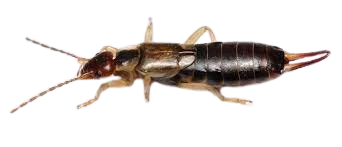
EARWIGS
Earwigs are small insects belonging to the order Dermaptera. They are characterized by the pincer-like appendages, called cerci, located at the end of their abdomens. These pincers are used for defense, prey capture, and mating rituals.
- Appearance: Earwigs typically measure around 0.5 to 1 inch (1.3 to 2.5 centimeters) in length. They have elongated bodies with two pairs of wings, although some species are wingless. The hind wings are usually folded underneath the short forewings, giving them a flattened appearance.
- Habitat: Earwigs are found worldwide, with different species inhabiting various regions. They prefer moist environments and are commonly found in gardens, mulch, leaf litter, and under rocks or logs. Earwigs are nocturnal, seeking shelter during the day and becoming active at night.
- Behavior: Despite their name, earwigs do not typically enter human ears. They are primarily scavengers, feeding on dead insects, decaying plant material, and organic matter. Some species can also be omnivorous, consuming living plants, flowers, and ripe fruit. Earwigs are not considered harmful to humans or pets, but their pincers can give a mild pinch if handled.
Contact us @ Speedy Pest Control for Earwig extermination!
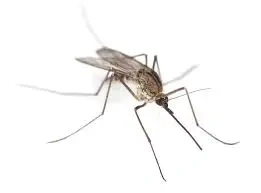
MOSQUITO
Contact us @ Speedy Pest Control for help

SOW BUGS
Show bugs, also known as woodlice or pill bugs, are small crustaceans that are not actually bugs, but rather land-dwelling crustaceans related to shrimp and lobsters. Sow bugs are commonly found in moist environments such as gardens, under rocks, logs, and leaf litter.
Sow bugs have a segmented, oval-shaped body and are usually gray or brown in color. They have a hard exoskeleton and seven pairs of legs. Unlike insects, sow bugs do not have wings.
Habitat: Sow bugs prefer damp and dark environments, as they are prone to desiccation (drying out). They can be found in gardens, under decaying organic matter, and in moist basements or crawl spaces.
While sow bugs are primarily outdoor creatures, they can occasionally find their way into homes through gaps or cracks. However, they do not cause structural damage, nor do they transmit diseases. Their presence indoors is often an indication of excess moisture.
If you encounter sow bugs indoors and wish to remove them, it’s best to address any moisture issues in your home and contact Speedy Pest Control to help exterminate them.
